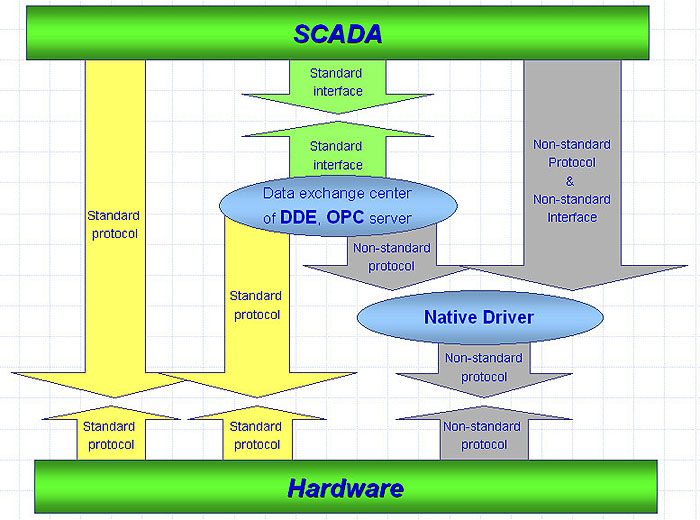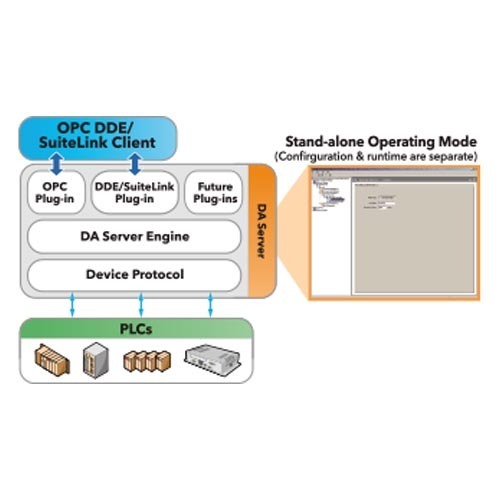
DDE (Dynamic Data Exchange): This protocol is a method of communication written by Microsoft in the early versions of Windows that relevant Windows 2.0 – 1987. This protocol process will typically find it is used in the older IO Servers, as well as products unrelated to Wonderware software such as Microsoft Excel. This is a general protocol, not specifically designed for the manufacturing space type of the protocol. This protocol is very quick but is limited in that it can only work on the local computer, and was not designed to run over a network.
Wonderware did see the type of limitation and extend the DDE protocol by creating Net DDE to facilitate network communications.
Because this type of the age of the DDE protocol, and better than technology becoming available, newer versions of Microsoft Windows make it very difficult to use DDE communications.
Dynamic Data Exchange (DDE) protocol:
The type of Windows provides several methods for transferring data. One method is to use the Dynamic Data Exchange (DDE) protocol. The DDE protocol is a set of messages and guidelines. This protocol sends messages between applications that share data and uses shared memory to exchange data between applications. Applications can use the DDE protocol for one-time data transfers and for continuous exchanges in which applications send updates to one another as new data becomes available.
Windows also supports the Dynamic Data Exchange Management Library (DDEML). The DDEML is a dynamic-link library (DLL) that applications can use to share data. The DDEML provides functions and messages that simplify the task of adding DDE capability to an application. Instead of sending, posting, and processing DDE messages directly, an application uses the DDEML functions to manage DDE conversations.
- The DDEML also provides a facility for managing the strings and data that DDE applications share.
- Instead of using atoms and pointers to shared memory objects, DDE applications create and exchange string handles, which identify strings, and data handles, which identify memory objects.
- The DDEML also makes it possible for a server application to register the service names it supports.
- This name is broadcast to other applications in the system, which can use the names to connect to the server.
- Moreover, the DDEML ensures compatibility among DDE applications by forcing them to implement the DDE protocol consistently.

Existing applications that use the message-based DDE protocol are fully compatible with those that use the DDEML. That is, an application that uses message-based DDE can establish conversations and perform transactions with applications that use the DDEML. Because of the many advantages of the DDEML, new applications should use it compare to the DDE messages. To use the API elements of the DDEML, you must include the DDEML header file in your source files, link with the DDEML library, and ensure that the process of DDEML dynamic-link library is in the system’s search path.
Suite-link:
This protocol is used to write by Wonderware, as is designed specifically with the manufacturing space. It is part of the design, all data transmitted by the Suitelink protocol includes not only raw data values, but also the time it was sent, and the quality of the data processing command.
Suitelink is a newer protocol than the DDE and was designed with networking in mind. As such, there is no type of special configuration needed to use Suitelink with a network protocol. In this type of Suitelink is owned by Wonderware and distributed by Wonderware, there is no limitation based on the version of Windows.
Suite-link Features:
Suite-link is designed specifically for high-speed industrial applications and provides the following features:
- Value Time Quality (VTQ) places a timestamp and quality indicator on all the data values delivered to VTQ-aware clients.
- Extensive diagnostics, including server loading, computer resource consumption, and the network transport, are made accessible through the Microsoft Windows NT operating system performance monitor. This feature is critical for the maintenance of distributed industrial networks.
- Consistent high data volumes can be maintained between applications when the applications are on a single node or distributed over a large node count.
- The network transport protocol is TCP/IP using Microsoft’s standard WinSock interface. Do not have to create shares for Suite-link I/O Servers.
General Advice:
The Suite-link protocol should be used whenever possible, as it will work with newer Windows Operating Systems, and will work over a network. The DDE protocol can be used if required but should be avoided where possible due to Microsoft removing availability in newer versions of Windows.

System Requirements for SuiteLink:
This section describes the hardware, software, and installation requirements for SuiteLink.
Hardware Requirements:
The following is a list of the hardware required to run the SuiteLink component.
Ø Computer with 2 gigahertz (GHz) or higher processor clock speed.
- 1 gigabyte (GB) of RAM or higher (512 MB minimum supported; may limit performance and some features).
- 8 gigabytes (GB) of available hard disk space.
Software Requirements:
- The following is the list of the software required to run the SuiteLink.
- Windows XP SP3 Professional edition (32-bit).
- Windows 2003 SP2 Standard and Enterprise editions (32-bit).
- Windows Vista SP2 Business and Ultimate editions (32-bit and 64-bit).
- Windows 2008 SP2 Standard and Enterprise editions (32-bit and 64-bit).
- Windows 2008 R2 SP1 Standard and Enterprise editions (64-bit).
- Windows 7 SP1 Professional and Ultimate editions (32-bit and 64-bit).
Installation Requirements:
The following installation requirements are prerequisites for the SuiteLink to work properly:
- Local administrator privileges are required to install the update.
- Microsoft WoW64 emulation component must be available on any 64-bit platform.
